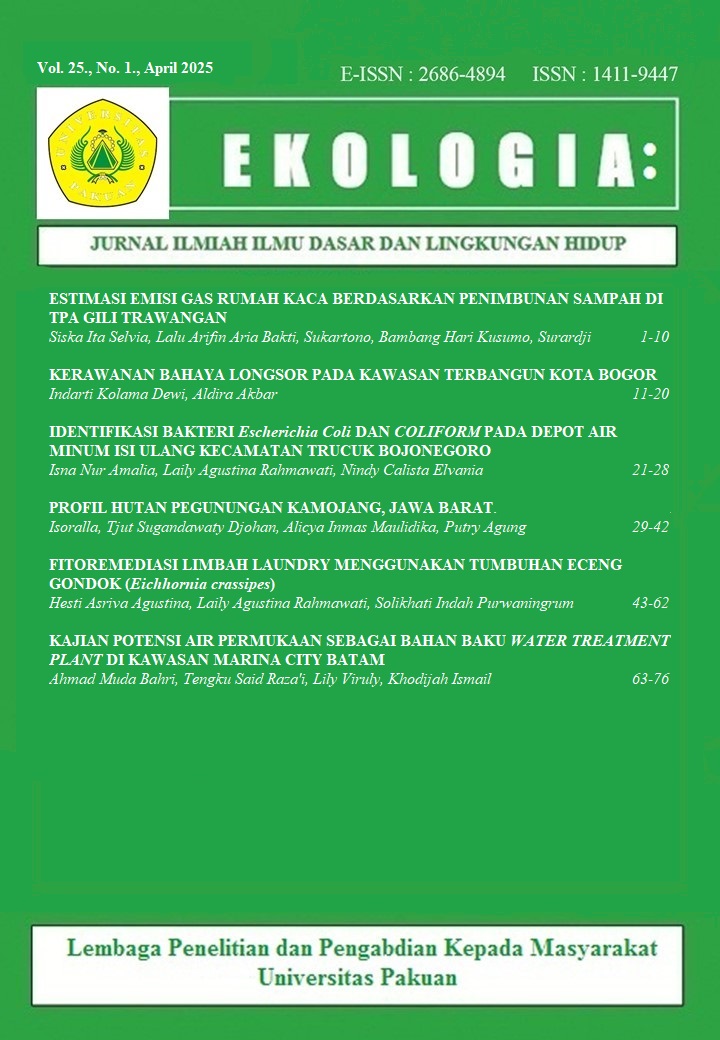ESTIMASI EMISI GAS RUMAH KACA BERDASARKAN PENIMBUNAN SAMPAH DI TPA GILI TRAWANGAN
Abstract
Gili Trawangan, one of the small island clusters in West Nusa Tenggara Province, faces serious problems in managing waste piled up in landfills with the open dumping method by only piling up without any backfilling or other processing. As a result, the Gili Trawangan TPA often experiences fires and explosions, indicating that the waste piles contain gas. This study aims to measure the potential gas stored in the piles of waste at the Gili Trawangan TPA Landfill and determine a strategy for developing methane gas potential as an alternative renewable energy for small islands. GHG emissions from landfills cannot be reduced even with technological advances, but the release of methane into the atmosphere can be significantly reduced by collecting methane gas. The methane gas content of waste at the Gili Trawangan TPA can be concluded that the peak of total methane gas production will occur in 2024, reaching a maximum of 192.23 MWh/year in the form of electrical energy and the form of gas as much as 216 kg of LPG/day. The potential energy figures obtained come from the potential of methane gas deposits in the same year of 172,100 m3/year based on modeling results using LandGEM software. Therefore, the potential of methane gas stored in waste piles can be used as an alternative energy source or as a starting point for policy-making for managing organic waste that triggers the formation of methane gas.
Keywords: gili trawangan, landGEM, methane gas, waste
Downloads
Published
How to Cite
Issue
Section
License

This work is licensed under a Creative Commons Attribution-NonCommercial-ShareAlike 4.0 International License.













